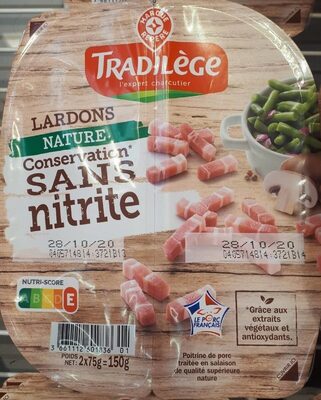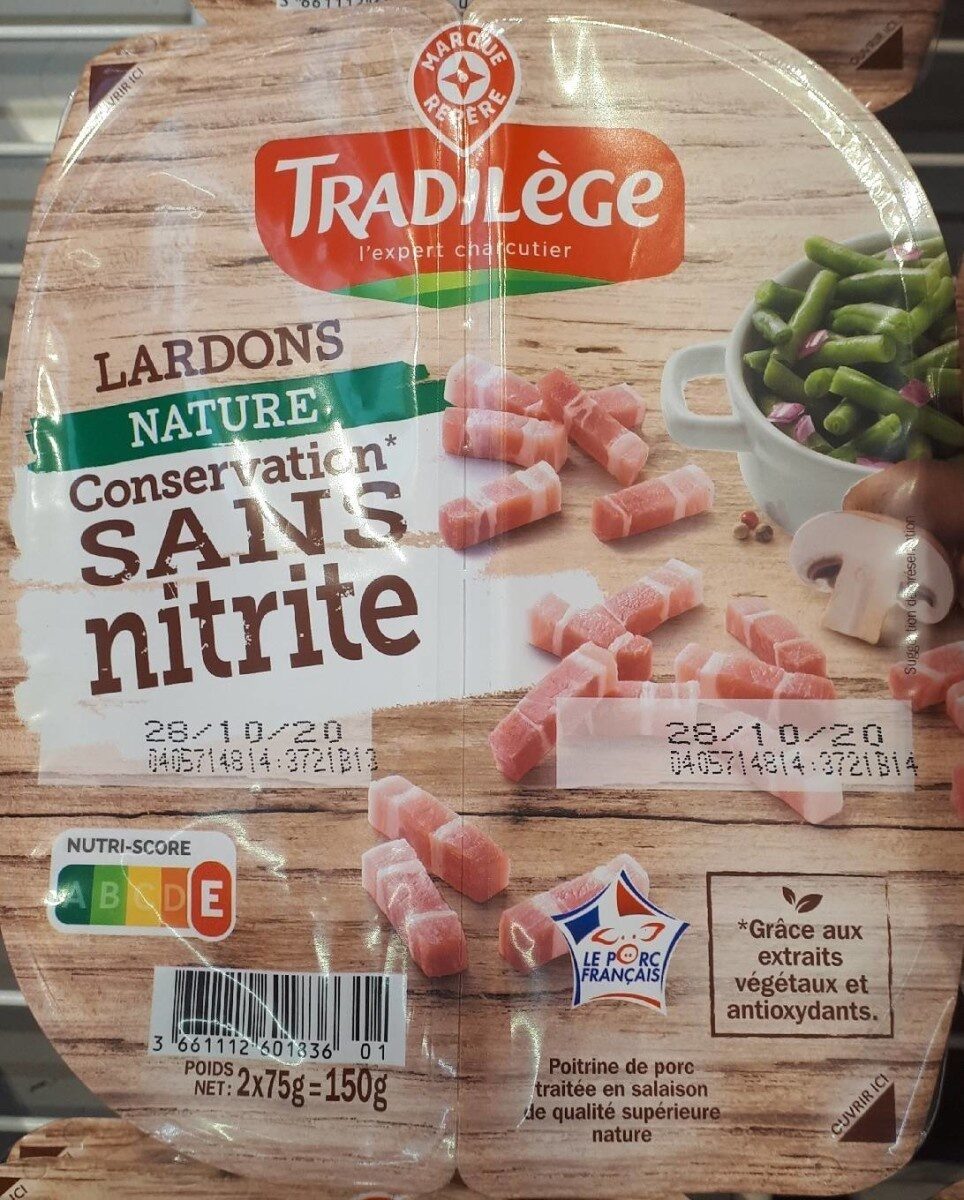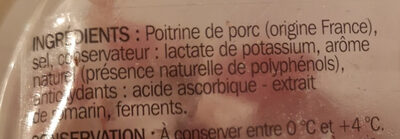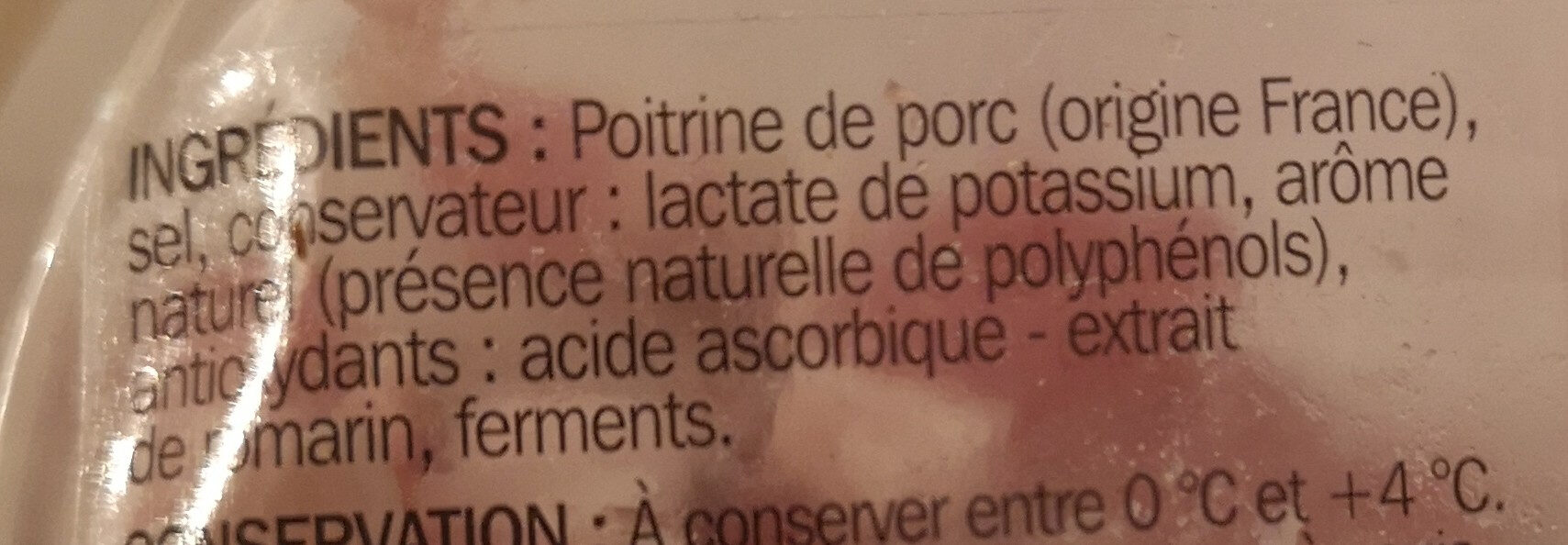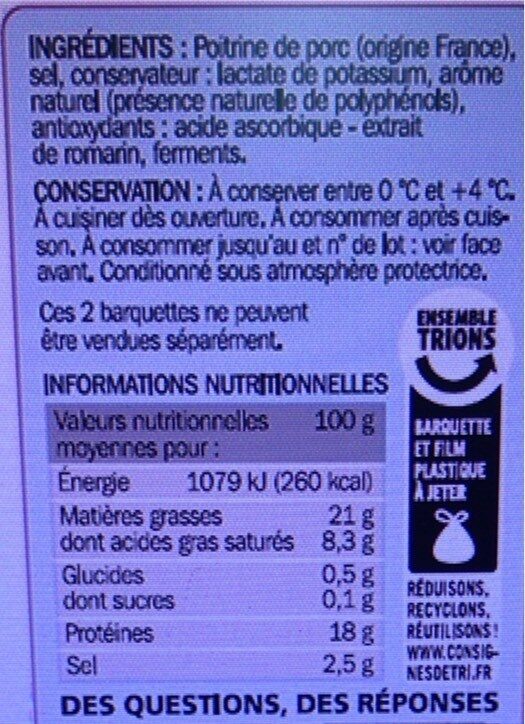lardons - Tradilège - 1pcs
This product page is not complete. You can help to complete it by editing it and adding more data from the photos we have, or by taking more photos using the app for Android or iPhone/iPad. Thank you!
×
Barcode: 3661112601836 (EAN / EAN-13)
Quantity: 1pcs
Packaging: fr:Film en plastique
Brands: Tradilège
Categories: Meats and their products, Meats, Prepared meats, fr:Charcuteries diverses, fr:Allumettes de porc, Lardons
Labels, certifications, awards: French meat, French pork, Nutriscore, Nutriscore Grade E
Origin of ingredients: France
Manufacturing or processing places: France
Traceability code: FR 22.388.001 CE - Vildé-Guingalan (Côtes-d'Armor, France)
Stores: Leclerc
Matching with your preferences
Environment
Carbon footprint
Packaging
Transportation
Report a problem
Data sources
Product added on by kiliweb
Last edit of product page on by teolemon.
Product page also edited by moon-rabbit, openfoodfacts-contributors, prepperapp, quechoisir, roboto-app, suny30, yuka.sY2b0xO6T85zoF3NwEKvllFaWNvYgSnfPQTTmFaV-c-ld8TtevRb3IzUHKs, yuka.sY2b0xO6T85zoF3NwEKvlmdXYtfAojXvHS7itlTTyPOiEaOyON195rn6N6g, yuka.sY2b0xO6T85zoF3NwEKvlnRIQob9rRebEDz6vBOrwMrUIa3jOvxZyZf0Mag, yuka.sY2b0xO6T85zoF3NwEKvlnZ2dfjGoDb7M0blpk6i4tKAFoTsbdJ1uonmPKs.
